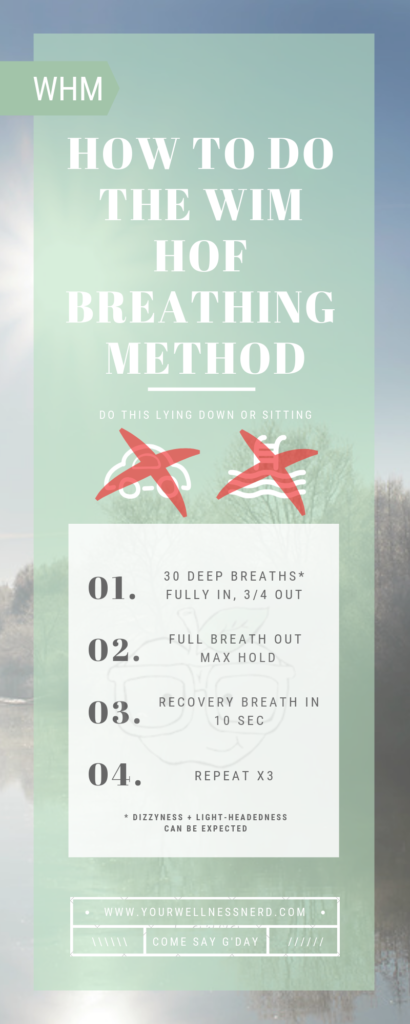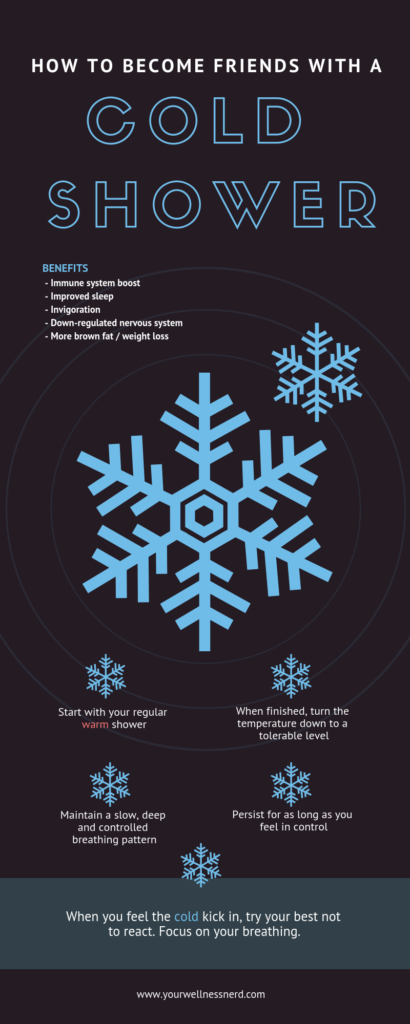
The Wim Hof Method: A Physiotherapist's Guide to Breathing & Cold Exposure
In the world of Physiotherapy and holistic health, few methods have generated as much intrigue and scientific interest as the Wim Hof Method. Developed by Dutch extreme athlete Wim Hof, this technique combines specific breathing exercises and cold exposure to potentially influence our autonomic nervous system and immune response.
From a clinical perspective, this has the potential to be groundbreaking. For years, we've treated conditions like chronic pain and inflammation by working around systems we believed were largely automatic. The Wim Hof Method suggests we may have more direct control than previously thought.
Key Takeaway
The Wim Hof Method isn't just a wellness trend; it's a science-backed approach that may help with pain management, inflammation reduction, and nervous system regulation by giving us conscious influence over processes we long considered automatic.
Who is Wim Hof and Why Should We Listen?
Wim Hof, known as "The Iceman," has achieved over 26 world records that defy conventional understanding of human physiology. His most notable feats include climbing Mount Kilimanjaro in shorts and completing a nearly two-hour full-body ice immersion.
But what separates Hof from other extreme athletes is his commitment to scientific validation. He didn't just make extraordinary claims; he invited researchers to study him, leading to peer-reviewed publications that confirm his techniques produce measurable, repeatable physiological effects.
The Science Behind the Method: A Physiotherapist's Perspective
From a clinical standpoint, the most compelling aspect of the Wim Hof Method is its potential to address two fundamental drivers of many conditions we treat: nervous system dysregulation and inflammatory processes.
Conscious Control of the Autonomic Nervous System
A landmark 2014 study published in the Proceedings of the National Academy of Sciences demonstrated that practitioners of the Wim Hof Method could voluntarily influence their autonomic nervous system and immune response.
This is significant because the autonomic nervous system regulates bodily functions we consider involuntary - heart rate, blood pressure, and immune activation. The ability to consciously modulate this system through breathing techniques offers new possibilities for managing stress-related conditions and inflammatory disorders.
pH Regulation and Inflammation Control
The Wim Hof breathing technique involves cycles of deep, controlled hyperventilation followed by breath retention. This process creates temporary, deliberate changes in blood oxygen and carbon dioxide levels, potentially shifting the body's pH toward alkalinity.
This is clinically relevant because chronic low-grade metabolic acidosis, often driven by poor diet, stress, and environmental factors, is associated with increased inflammation, tissue sensitivity, and pain receptor activation. By consciously altering our respiratory chemistry, we may create a less hospitable environment for inflammatory processes.
Practical Application: The Complete Wim Hof Method
Based on my clinical experience working with patients, here's how to safely implement the complete method.
Part 1: The Breathing Technique
The fundamental breathing practice involves three phases:
- Deep Breathing: 30-40 powerful breaths through the nose or mouth, focusing on full inhalation and passive exhalation
- Breath Retention: After the final exhalation, pause at the bottom until you eventually feel the urge to breathe
- Recovery Breath: Taking a deep breath in and holding for 15-20 seconds before exhaling
This completes one round. Most practitioners perform 3-4 rounds per session.
Clinical Insight: Breath Hold Times
In my practice, I've observed that initial breath retention times often correlate with overall physiological state. Patients with conditions like fibromyalgia or chronic pain syndromes typically start with shorter retention times (20-45 seconds), while healthier individuals may achieve 60-90 seconds initially. With consistent practice, these times typically increase, suggesting improved physiological resilience.

Part 2: Cold Exposure Therapy
Cold exposure completes the method, providing what I describe to patients as a "vascular workout" that trains circulatory response and enhances physiological resilience.
Cold Showers: An Accessible Starting Point
Research suggests cold showers below 60°F (15°C) for 2-3 minutes can stimulate leukocytes (infection-fighting blood cells), improve circulation, and potentially reduce symptoms of depression.
For beginners, I recommend this gradual approach:
- Start with your normal warm shower
- Gradually decrease the temperature over 30 seconds
- Begin with 30 seconds of cold exposure
- Focus on deep, controlled breathing throughout
- Slowly increase cold exposure time as tolerance improves

Progressing to Ice Baths
For those seeking greater benefits, ice baths (typically 50-59°F or 10-15°C) provide more intense cold exposure. The key principles remain the same: focus on breath control and gradually increase exposure time as your adaptation improves.
Clinical Applications and Safety Considerations
While the Wim Hof Method shows promise for conditions involving inflammation, pain, and stress dysregulation, certain precautions are essential:
Important Safety Notes
- Never practice breathing exercises in water or while driving due to the risk of fainting
- Consult your healthcare provider if you have cardiovascular conditions, epilepsy, or are pregnant
- Individuals with Raynaud's syndrome or cold urticaria should avoid cold exposure
- Always listen to your body and progress gradually
Conclusion: A Valuable Tool in Modern Physiotherapy
The Wim Hof Method represents an exciting frontier in mind-body medicine. While it's not a panacea, it provides a practical, accessible tool that empowers individuals to actively participate in their physiological regulation.
From reducing inflammatory markers to improving stress resilience, the potential applications in a physiotherapy context are significant. As with any intervention, individual results vary, but the growing body of evidence suggests this is more than just another wellness trend.
I encourage both patients and colleagues to approach the method with an open mind and appropriate caution. The potential benefits for pain management, inflammation reduction, and overall resilience make it worth serious consideration in comprehensive treatment approaches.
Have you tried the Wim Hof Method? What has your experience been with breath retention times or cold exposure? Share your experiences in the comments below.
Need Personalised Guidance?
If you'd like help trying to uncover the underlying cause of your pain or dysfunction, consider booking an online Telehealth consultation with Grant here!

